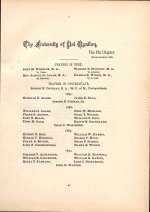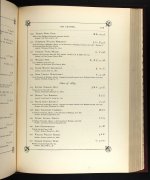Björn Bergenholtz
(former alias "Calalp")

Merops urica
Here's another (my last) attempt on Horsfield's urica ...
If we follow the second reference of "Merops urica", in the link supplied by Mark (in #554), about "The Pirik Bee-eater" we find Swainson's "Zool. Ill. n. s.[!] t. 8", which takes us to Plate/Tabula 8 (here), and the text for "MEROPS urica. Javanese Bee-eater" (here), but it doesn't add much, no comment regarding the name itself (neither of urica, nor of 'Pirik'), only a somewhat resigned note:
Any connection to urica?
[It's somewhat in line with my speculations/guesses, way back, in december last , in post #383]
Well, that's it (on my part), I cannot reach any further, I've done my best in trying to figure it out (without, from what I can tell, any true success/explanation) ... a bit disappointing, but that's the name of the game. Some names will simply stay unexplained.
To anyone keener, still trying, still digging ... : Good luck!
Björn
Here's another (my last) attempt on Horsfield's urica ...
If we follow the second reference of "Merops urica", in the link supplied by Mark (in #554), about "The Pirik Bee-eater" we find Swainson's "Zool. Ill. n. s.[!] t. 8", which takes us to Plate/Tabula 8 (here), and the text for "MEROPS urica. Javanese Bee-eater" (here), but it doesn't add much, no comment regarding the name itself (neither of urica, nor of 'Pirik'), only a somewhat resigned note:
I wonder how Swainson would have put it if he had known about the even earlier "LE GUÉPIER QUANTICOLOR Merops Quinticolor", by Vieillot, from 1817, (OD here, all in French). In Vieillot's text about the same "M. Quinticolor", in Encyclopédie méthodique ... (from 1823) we find the word "uropygio", in the Latin description (on p.393), here. Similar to the "uropygioque" mentioned by Horsfield himself, in the OD of "Merops Urica" (of 1822, here).Most unwillingly I have again in this instance anticipated my friend Dr. Horsfeild [sic] in describing this bird, which he found in Java, and which I engraved after one sent from Ceylon, without knowing it had also fallen under his observation.
Any connection to urica?
[It's somewhat in line with my speculations/guesses, way back, in december last , in post #383]
Well, that's it (on my part), I cannot reach any further, I've done my best in trying to figure it out (without, from what I can tell, any true success/explanation) ... a bit disappointing, but that's the name of the game. Some names will simply stay unexplained.
To anyone keener, still trying, still digging ... : Good luck!
Björn







